Maasai Tribe History, Language, Culture, Tradition, Religions, and More
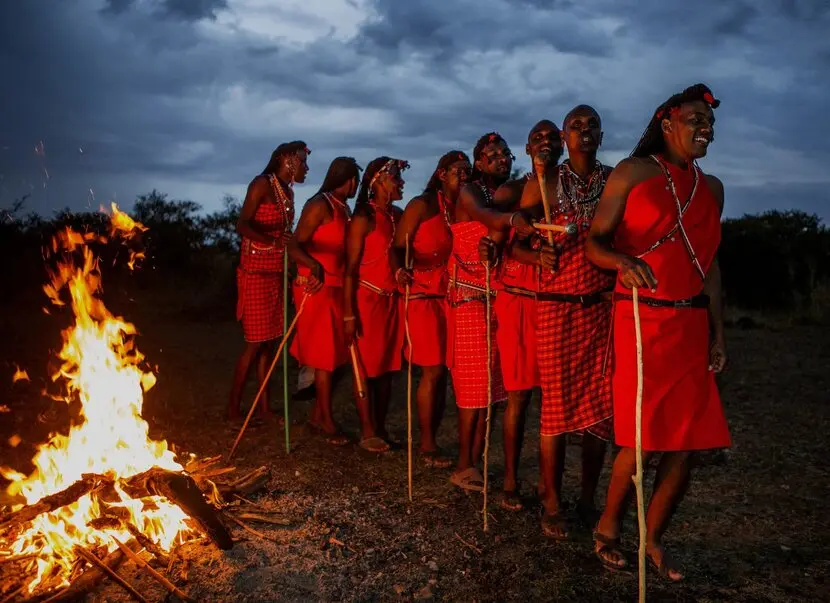
The Maasai tribe is a Nilotic ethnic group from the East Africa countries Kenya and Tanzania. They are among the best-known African tribes located primarily in southern Kenya as well as northern Tanzania.
Their traditional way of life is centered around herding cattle and their famous semi-nomadic lifestyle. They’re believed to have been the original inhabitants of East Africa and are thought to have migrated from the Nile River Valley in what is now Ethiopia.
There is more to learn about the Maasai people as you will find out from this piece. But before that, here is how you can reach us and our most booked Kenya safari tours.
Contact Us to Book Your Kenya Safari with Us
Embark on a thrilling adventure and discover the fascinating culture of the Maasai people with Africa’s premier tour operator, MasaiMaraSafari.in. Our long-standing relationships with the Maa community give you the opportunity to delve deep into their rich culture and explore ancient customs, beliefs, and legends.
We offer a range of different safari packages taking in some of the best Maasai tribal villages as well as game reserves in Kenya. You can reach us at james@ajkenyasafaris.com or safarioffers@ajkenyasafaris.com to get started. We are also available for call/WhatsApp at +254-748-258-880.
Our Top Kenya Safari Tours, Packages, and Offers
| The Best Kenya Safari Packages | Detailed Itinerary | Price Per Person Sharing |
|---|---|---|
| 3-Day African Safari in Kenya | View the Itinerary | From USD 880 |
| 3-Day Masai Mara Budget Safari | View the Itinerary | From USD 880 |
| 4-Day Ashnil Mara Camp Safari | View the Itinerary | From USD 1190 |
| 4-Day Lake Nakuru & Masai Mara Safari | View the Itinerary | From USD 1180 |
| 4-Day Mara Serena Safari Lodge Trip | View the Itinerary | From USD 1262 |
| 4-Day Masai Mara Flying Safari | View the Itinerary | From USD 1450 |
| 4-Day Masai Mara Group Safari | View the Itinerary | From USD 750 |
| 4-Day Masai Mara Migration Safari | View the Itinerary | From USD 1430 |
| 5-Day Naivasha & Masai Mara Group Safari | View the Itinerary | From USD 854 |
| 6-Day Amboseli, L. Naivasha, & Masai Mara Safari | View the Itinerary | From USD 1764 |
| 6-Day Amboseli, L. Nakuru, & Masai Mara Group Safari | View the Itinerary | From USD 1186 |
| 6-Day Hell’s Gate, L. Nakuru, & Masai Mara Safari | View the Itinerary | From USD 1788 |
| 6-Day L. Nakuru, Hell’s Gate, & Masai Mara Group Safari | View the Itinerary | From USD 1123 |
| 6-Day Nairobi & Masai Mara Family Safari | View the Itinerary | Adult From USD 2000 |
| 6-Day Nairobi, L. Nakuru, & Masai Mara Safari | View the Itinerary | From USD 1795 |
| 7-Day Amboseli, Naivasha, & Masai Mara Group Safari | View the Itinerary | From USD 1130 |
| 13-Day Kenya Wildlife & Beach Safari | View the Itinerary | From USD 5258 |
Maasai History – The Origin of the Maasai People
Maasai societies are a nomadic tribe inhabiting parts of Kenya and Tanzania. They have a long, rich history dating back centuries. According to legend, the Maasai originated from an area located near Lake Victoria in East Africa, where they were said to be the descendants of two warrior clans; the Ateker and Isenye.
They moved south along the western slopes of the Great Rift Valley. As they journeyed, they encountered numerous other ethnic groups and tribes who were eventually assimilated.
The traditional Maasai people are the most prominent and well-known of all the African tribes, due to their fierce warrior reputation and colorful garments.
Maasai Community Economy
They’re a pastoral community, meaning they rely heavily on herding and the raising of livestock for food and sustenance. They heard mainly cows, but also goats, sheep, as well as chickens.
The Maasai migrate in search of fresh grazing land to ensure their cattle and other livestock have plenty to eat along with sufficient water.
A man’s wealth is measured by the number of cattle he owns. Their cattle are used as a form of currency, and they also provide milk, which is an essential part of Maasai culture.
Maasai Language – The Maa Language
The Maasai language is known as Maa and it is spoken by the majority of the people in Kenya’s southern region. It is also used to a lesser extent among the Tanzania’s community.
The language has two dialects, which are Il-Kaputiei and Il-Dorobo. Il-Kaputiei is the most commonly spoken dialect and it is used for everyday communication.
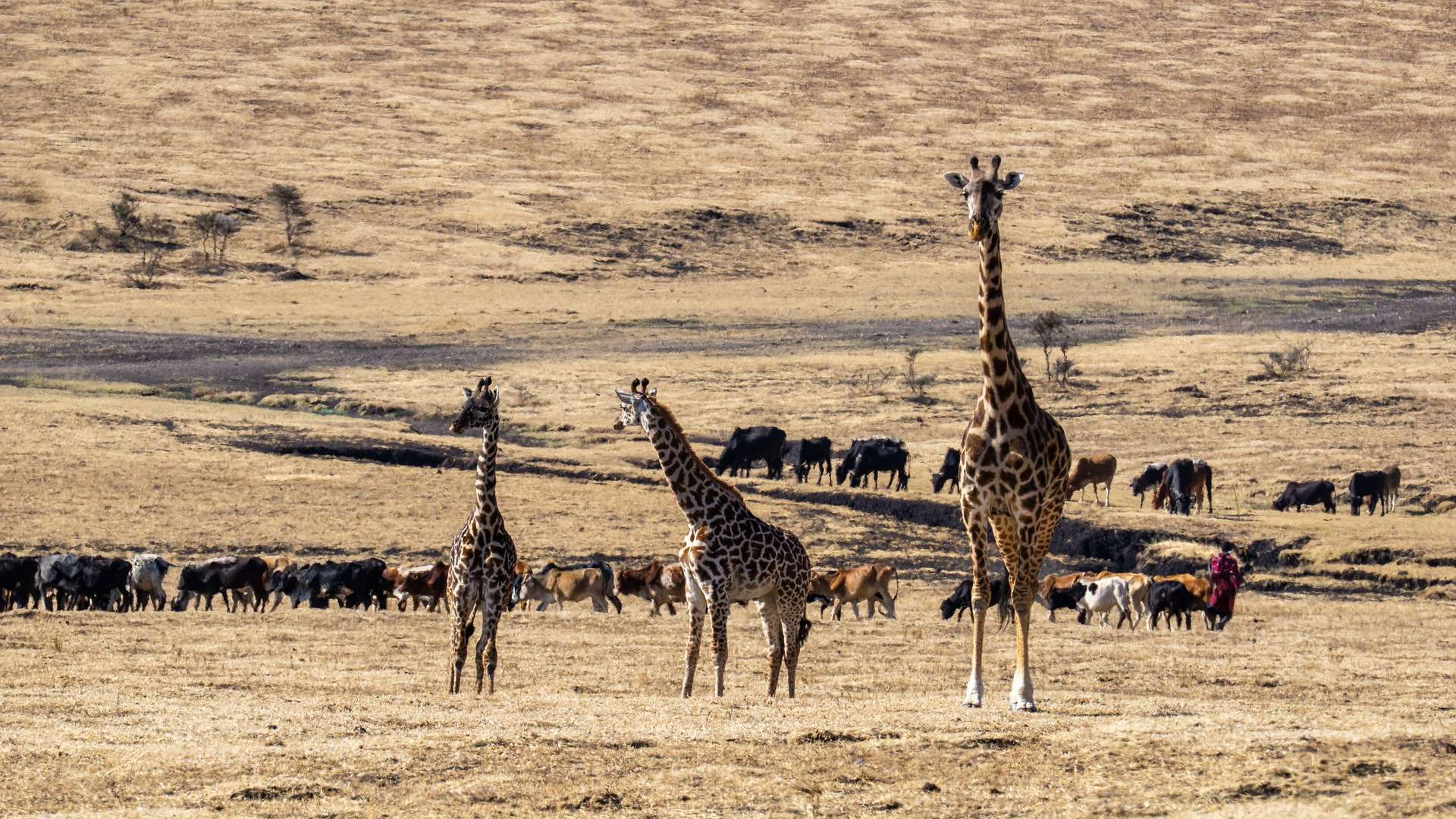
Maasai Population and Location
The Masai population is estimated to be around 1.5 million and the majority of them can be found in Kenya & Tanzania. In Kenya, they mainly inhabit the Rift Valley, Nairobi, Meru, Kajiado, Narok, Laikipia and Baringo counties.
In Tanzania, they are mainly found in Monduli, Ngorongoro and Simanjiro districts.
Maasai Culture and Tradition
Maasai are highly spiritual and their culture is deeply rooted in their religious beliefs. They also have a strong tradition of warriorhood and the men of the tribe are expected to be warriors. The Masai practice a very strict form of gender segregation and they believe that women should not participate in certain rituals and activities.
The Maa also have a unique way of expressing their culture through art. They use a combination of colors, symbols and designs to create beautiful pieces that reflect their beliefs. They also make jewelry and other artifacts that are highly valued and sought after.
Maasai Music and Dance
The Maasai have a rich musical tradition that is expressed through singing and dancing. Music plays an important role in ceremonial occasions, such as weddings and funerals, where it is used to convey emotion.
The Maasai also use music and dance to tell stories, express their ideas and beliefs, and pass on traditions to the next generation.
The Maasai are a proud people who have managed to preserve their singing and dancing despite the constant challenges they face. They’re an inspiration to many and their vibrant culture is something that should be celebrated.
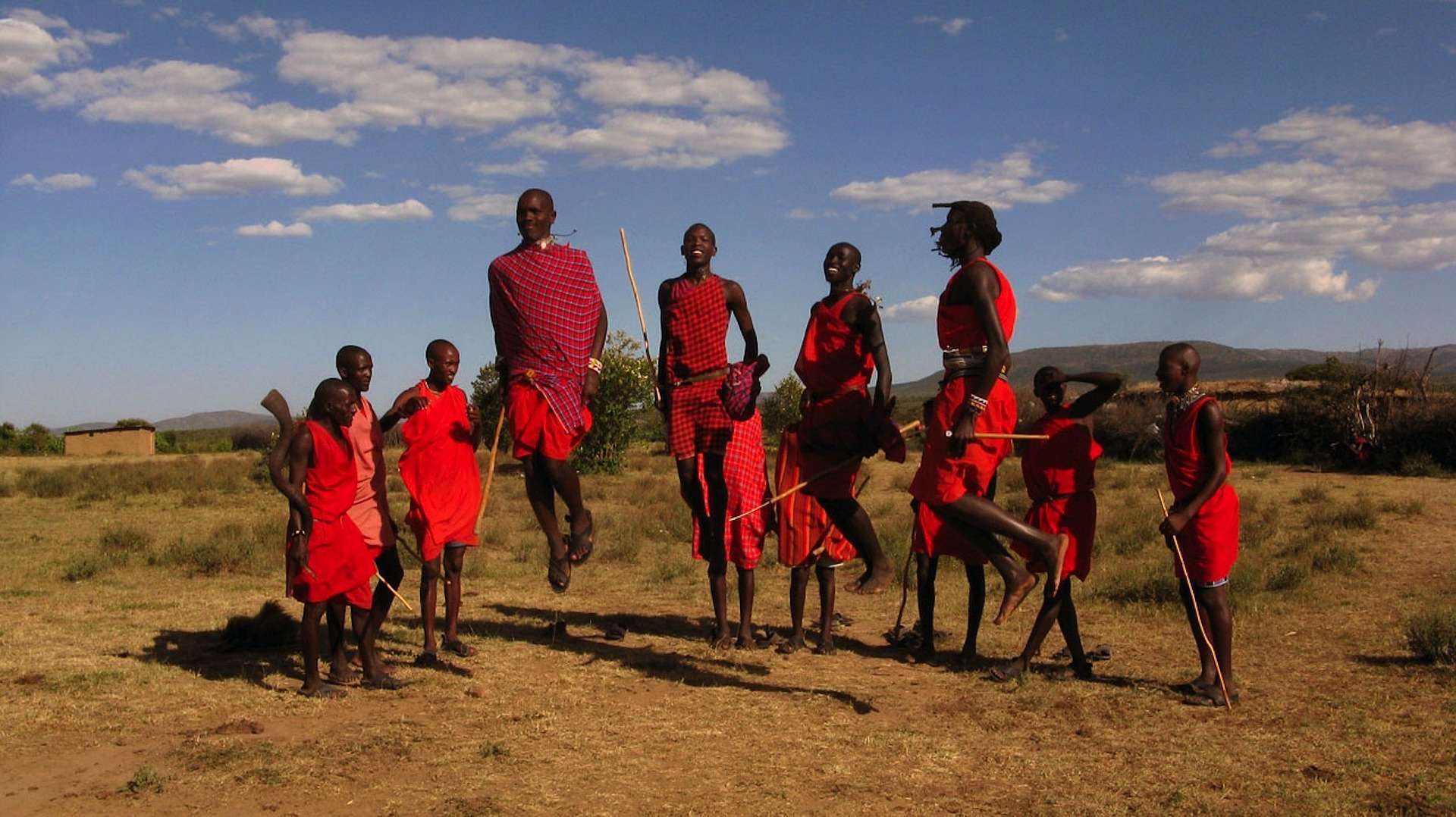
Maasai Warrior – Maasai Men
Maasai warriors are an important part of their culture and they are expected to protect the tribe from danger. The Maasai warriors typically wear red clothing, which is a symbol of strength and courage. They’re known for their bravery in battle and they’re highly respected within the tribe.
The Maasai warriors also have a number of rituals and ceremonies that they must complete before they can become a warrior. These include circumcision and initiation into the tribe.
Maasai men are also expected to follow a strict code of conduct and they must always act with courage and strength. They’re an integral section of the Masai society & they play an important role in protecting the tribe.
Maasai Shelter – Meet the Manyatta
The Maasai live in a type of hut called a manyatta. These huts are made of mud, sticks and grass and they provide protection from the elements.
The manyattas are constructed in a circular shape and they have an open entrance that faces east. This allows the villagers to see the sunrise each morning, which is vital in the Maa culture.
The manyattas are also used for gatherings and ceremonies and they’re important to the community culture.
Maasai Food & Diet – Traditional Dishes
The Maasai diet is mainly composed of maize, beans, sorghum and millet. They also rely on the meat from their cattle as the primary source of protein.
The Maasai also consume a variety of wild fruits, vegetables and herbs that they forage from the land.
Some of the traditional Masai dishes that are consumed by the community include ugali (a maize porridge), mursik (fermented milk) and nyama choma (grilled meat).
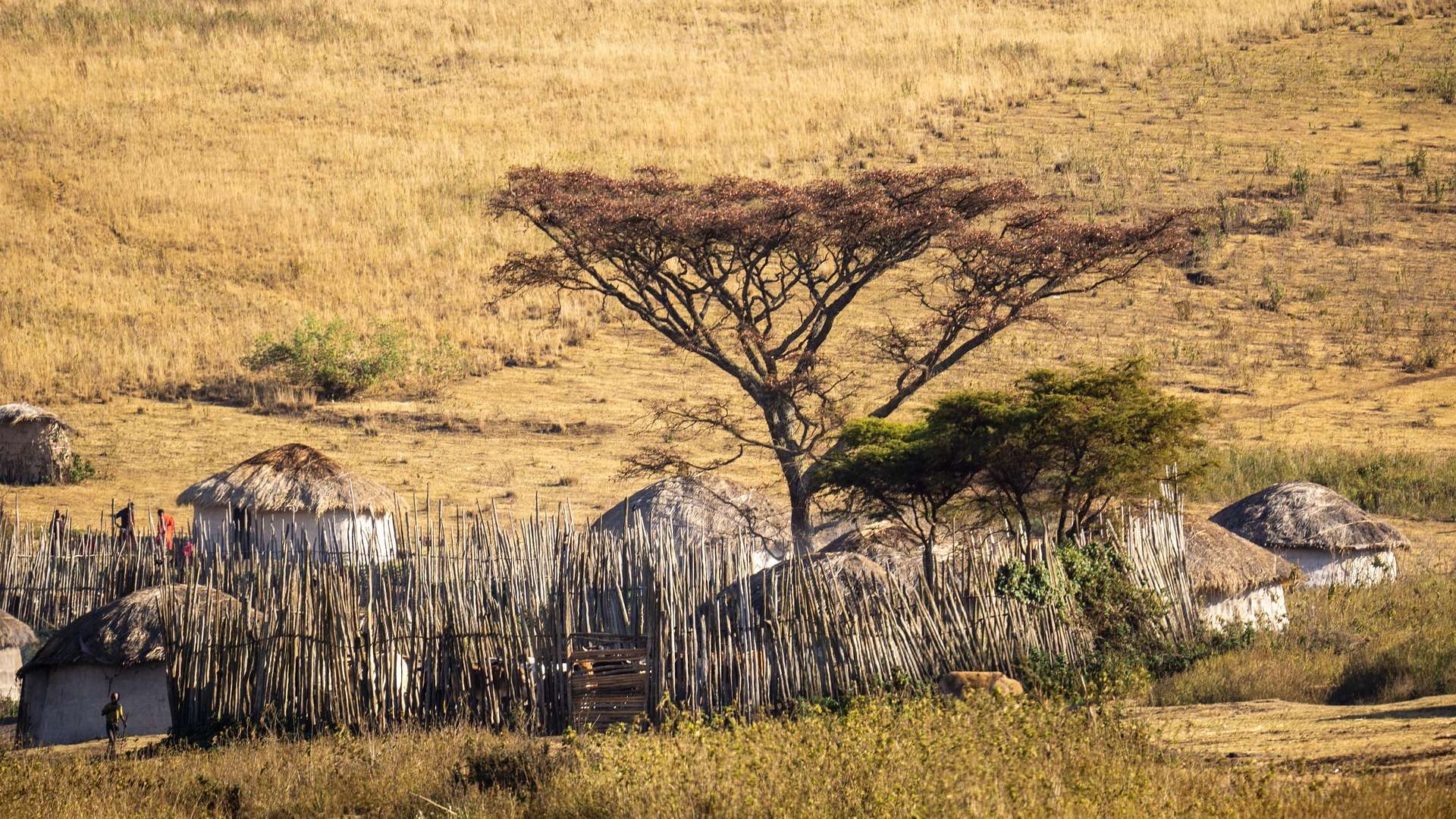
Maasai Religion – Animism & Christianity
The Maasai people of Kenya & Tanzania are traditionally animist, meaning they believe in the spiritual power of nature. They also follow a set of practices and beliefs that are based on their own culture and traditions.
Many Maasai people have adopted the Christian faith, which has been embraced by the majority of Kenyans and Tanzanians.
Although the Maasai people are a proud and independent tribe, their culture has been significantly impacted by Christianity. This is evident in the fact that many Maasai people today identify as Christians and celebrate Christian holidays.
Maasai Hair – Unique Hairstyles
They’re well known for their unique hairstyles. Traditionally, the men have short hair that is plaited and adorned with red beads and feathers.
The women, on the other hand, tend to have longer hair that is plaited in intricate designs and decorated with colorful beads.
The Maasai hairstyles are an important part of their culture and a symbol of beauty, strength and identity.
Maasai Clothing – Bright and Colorful
The Maasai society is now adorning bright and colorful attires around the body. The men wear wraparound skirts made from a type of cloth called Shuka while the women wear a wrap-around skirt, known as an Enkoko.
Maasai community also uses accessories such as necklaces, earrings and bracelets to adorn themselves. These accessories are often made from beads, shells and animal hides.
The Masai also use face paint to decorate their bodies. This is usually done in red, white and black pigments that symbolize strength, courage and protection.
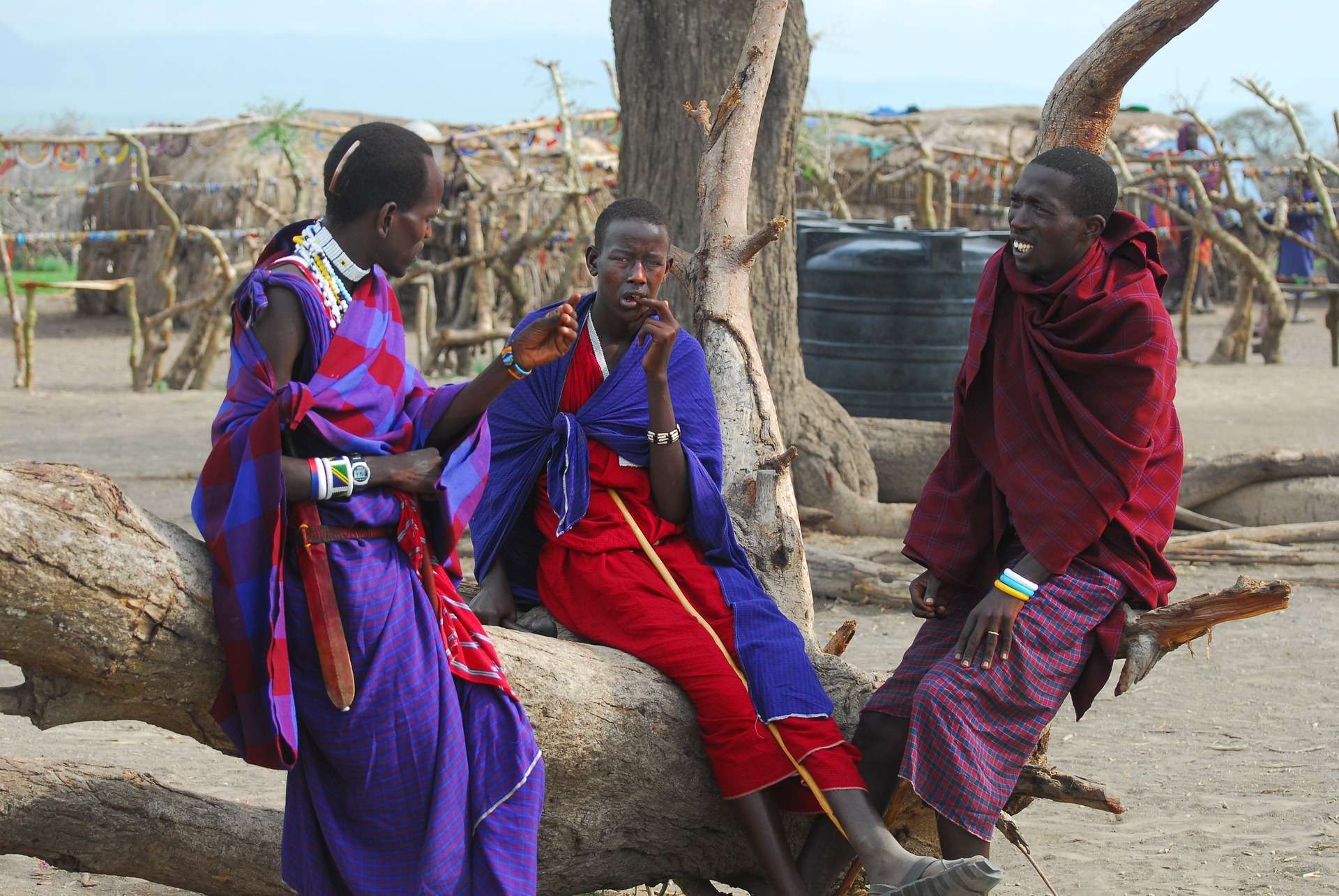
Tanzania Tribes Maasai
The Maasai are one of the most prominent tribes in Tanzania. The tribe is found mainly in northern and northeastern Tanzania where they have been living for centuries.
The Tanzania Maasai tribes are quite distinct from their Kenyan counterparts. They have a unique set of beliefs and traditions that define who they are & how they live.
The Tanzania Maa community is well known for their traditional dances and ceremony, which is a highlight of any visit to this region. They also practice a unique style of animal husbandry and are passionate about their traditional culture.
The Tanzania Maasai are also known for their vibrant and colorful attire as a symbol of their strength and identity.
Influence of the Modern World
The Maasai way of life has been significantly impacted by the modern world. Many of their traditional beliefs and practices have been replaced or modified with the western values because of globalization.
The Maasai have had to adapt to the changing world and find a balance between preserving their traditions and embracing modernity. This has been a difficult challenge for the Maasai people as they strive to maintain their unique identity in an increasingly globalized world.
Despite these changes, the Maasai people remain a proud and independent tribe that is deeply connected to their customs and culture.
Meet the Maasai Tribe on a Safari
They’re a fascinating tribe that is best experienced on a safari. If you’re planning to visit Kenya or Tanzania, be sure to add the Maasai tribe to your list of must-see attractions.
A safari, known as the cultural tour of Maasai people, will give you a chance to explore most of their culture at the Maasai village. Here, you will be able to witness first-hand the vibrant culture of these proud & resilient people.
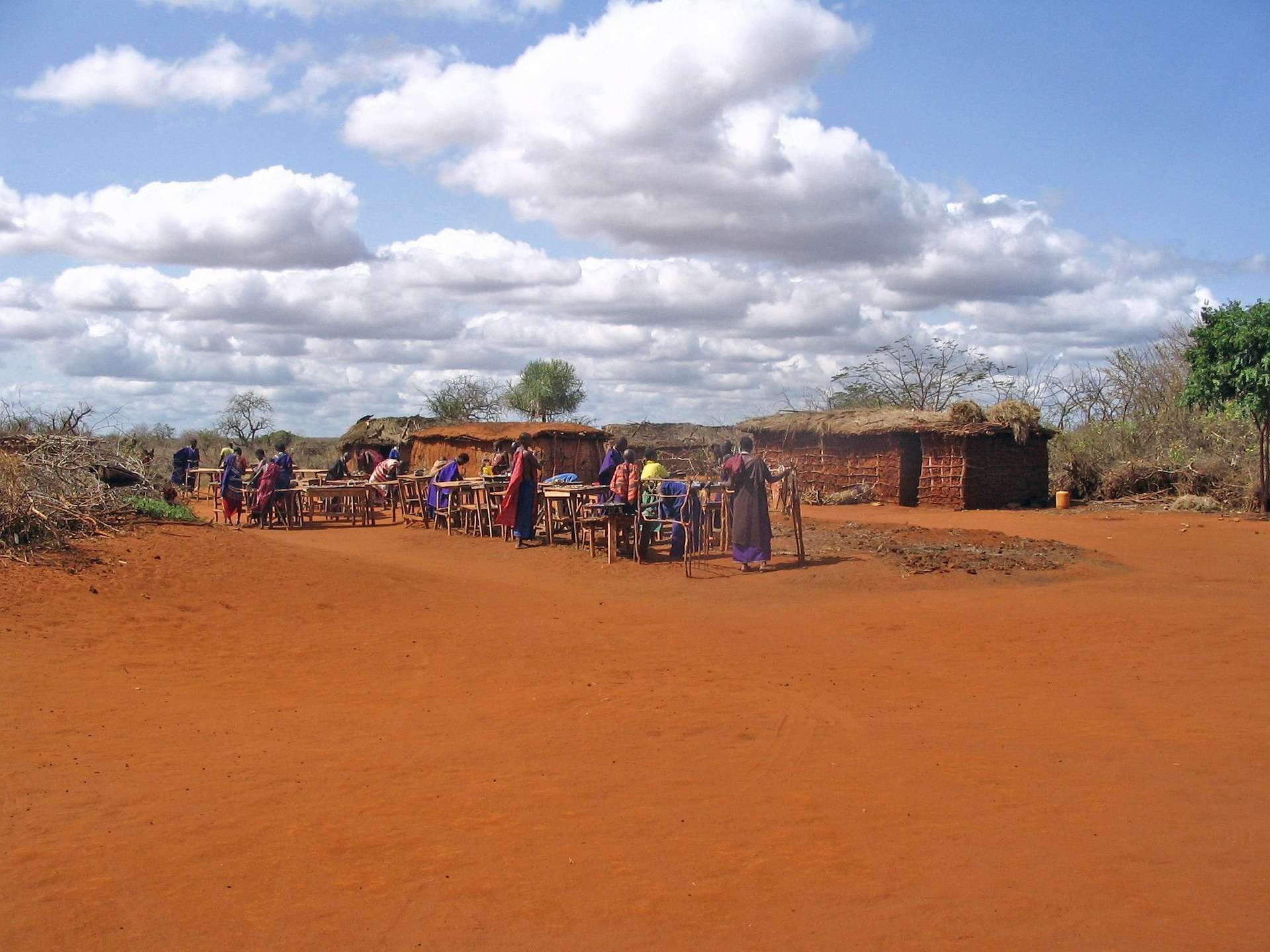
Maasai Tribe Facts and FAQs
The next section will provide answers to some frequently asked questions about the Maasai tribe.
1. What is Maasai tribe famous for?
The traditional Maasai community is well known for their unique customs and culture, including vibrant clothing, intricate hairstyles, elaborate jewelry and face painting. Their way of life, the cattle they keep, and their dancing ability also makes them popular around the world.
2. Where are the Maasai tribe from?
Most of the Maasai tribe live in Tanzania and Kenya. You will find them around the major game reserves and parks like Masai Mara and Serengeti National Park.
3. What do Maasai tribe eat?
The Maasai people have a diet mostly composed of dairy products, meat and blood. They also eat grains such as sorghum, millet & maize.
4. What language do the Maasai speak?
The Maasai people mostly speak Maa, a language of the Nilotic family. Most of them can also speak Swahili and English.
5. What religion do the Maasai follow?
The Maasai are mostly Christian, though they also practice traditional religion with various animist beliefs. With a long-standing belief in the natural world and its connection to their spiritual lives, they have a deep respect for nature.
6. Are Maasai friendly?
The Maasai people are known for their hospitality, and they often welcome visitors to their villages with open arms. A Maasai greeting is always filled with warmth and respect.
7. What is a man’s wealth to the Maasai society?
For the Maa community, the wealth of a Maasai man is measured by the number of cattle and the number of children he has. By the Maasai culture, the more cattle & children a man has, the wealthier he is.
8. What is unique about the Maasai?
They’re a proud and independent tribe that have managed to maintain their traditional culture & customs despite the influence of western values. They’re also one of the few tribes in Africa that still practice nomadic herding.
9. Do the Maasai still exist?
The Maasai tribe still exists in East Africa, though their traditional way of life has been impacted by modernity. Despite this, the Maasai have managed to preserve their unique culture and identity & manages the land around the game reserves.
10. Do the Maasai eat raw meat?
Yes, most of the Maasais often eat raw meat of a freshly slaughtered animal with a few herbs . It’s a traditional part of the Masai culture and diet in a community. However, this practice is slowly changing due to health concerns and other factors arising in the modern world.
11. What do Maasai eat for breakfast?
The traditional Maasai breakfast consists of ugali, a cornmeal porridge, and fresh milk. They also eat roasted maize or millet flour mixed with water.
12. Is the Maasai diet healthy?
Maasai diet is high in protein and low in fat, which makes it a healthy option. However, their diet lacks essential vitamins and minerals, so it’s important to supplement with a few vitamins & minerals.
13. Do the Maasai still practice polygamy?
Yes, the traditional Maasai practice polygamy, although this is slowly changing due to the influence of modern values.
14. Which is the recommended attire of a Maasai lady to wear around the body?
To the Maasai society, the large and colorful checked shuka is the recommended attire for ladies. This traditional blanket is worn around the body & also serves to protect from the elements.
15. What should be worn by a Maasai warrior?
The traditional attire to be worn by the Maasai warrior includes a red shuka cloth, leather belt, jewelry and ornaments. The warriors also wear sandals and a leopard skin on top of their outfit.






